Looking for an easy way to add an oomph factor and an extra appeal to your indoors? It is time for you to add a fishbone cactus.
Fishbone cactus are zig-zag, wavy-shaped succulents that are primarily found in indoor gardens. Fishbone cactus belong to the Cactaceae family and are commonly known as orchid cactus or Ric Rac plants. They are also called Epiphyllum anguliger or Disocactus anguliger.
As you grow your indoor garden and learn about more plants, try adding a few fishbone cactus! But before you head out to get one, you must learn a few things about these beautiful plants.
They’re a bit harder than other plants like a snake plant or pothos and aren’t a great plant for beginners. However, knowing the best way to care for your Ric Rac will help your plant live a long life!
This comprehensive guide talks about everything related to the fishbone cactus—how to maintain one, the conditions that they thrive in, and more.
Keep reading to learn all about them.
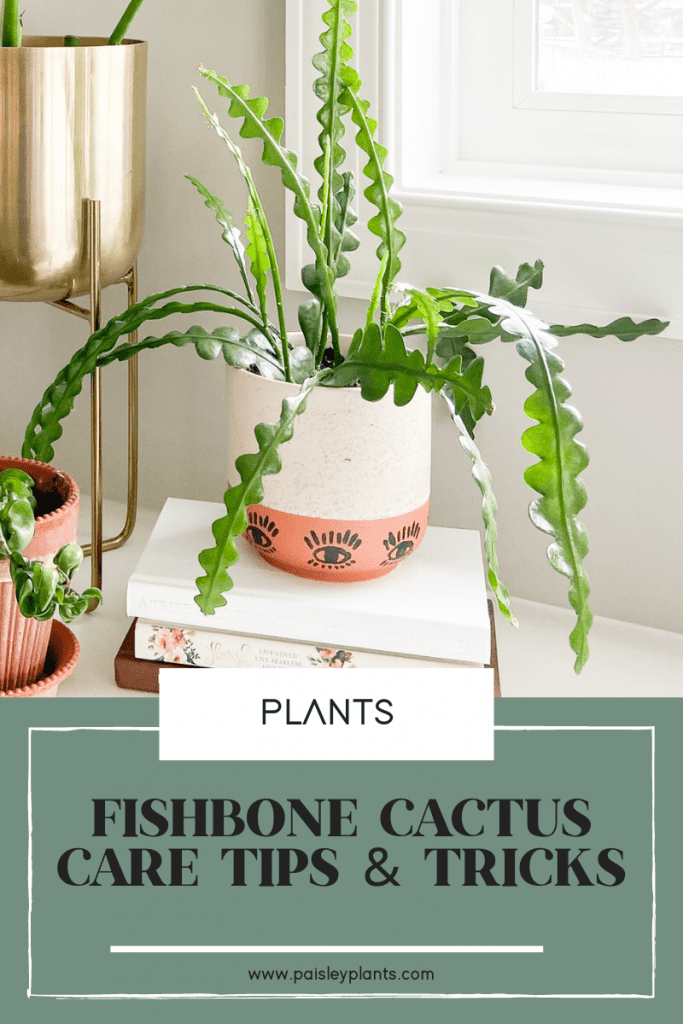
Table of Contents
Background
Fishbone cactus are native to Mexico’s luscious rainforests. They grow from tree branches and can survive without direct sunlight.
The fishbone cactus is widely popular as an indoor plant as it is an epiphyte or an air plant. This means that it can grow and thrive in low soil conditions pretty well too.
Fishbone cactus are low maintenance and do not require constant care. Various factors like water, light, soil, fertilizer type, temperature, and humidity affect your plant. Maintaining these factors at optimal levels will help your Fishbone Cactus flourish.
Common Names
The Fishbone Cactus is known by a few other names. The commonly used names include:
- Orchid Cactus
- Zig Zag Cactus
- Ric Rac Cactus
- St. Anthony’s rik-rak
Water

Unlike other cactus that are found in deserts that do not require regular watering for survival, fishbone cactus need to be watered regularly. Otherwise, the leaves will wither and cause the plant to look lifeless. However, you don’t want to overwater it!
The fishbone cactus does best when allowed to dry out before watering. Water the plant only when the top inch of the soil is dry. You’ll usually need to water it once a week or every other week.
Avoid using cold water or hard, toxic municipal water that can damage the plant’s roots. Distilled water that is devoid of any salts is best. You can easily do this by filling up a container of water and let it sit overnight. That will neutralize any chemicals and also bring it to room temperature.
Light
Fortunately, fishbone cactus do not require direct sunlight to survive. This is one primary reason why it qualifies as a great indoor plant.
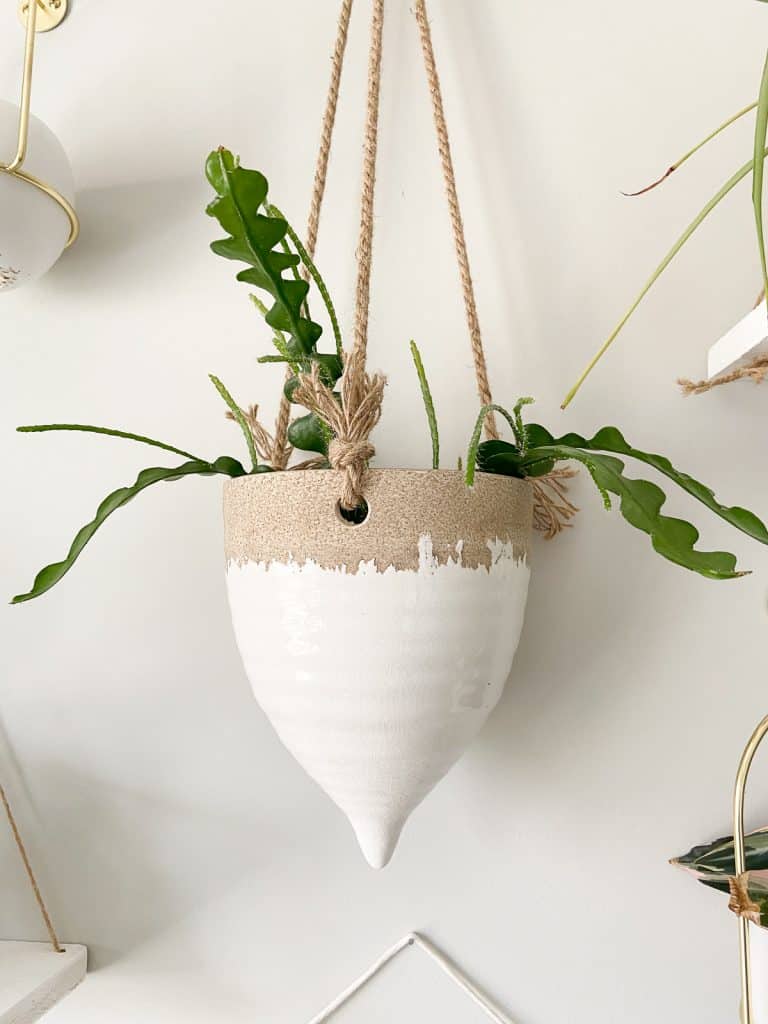
In fact, too much direct sunlight can turn the leaves yellow. Bright, indirect, and dappled sunlight is the choice of light for fishbone cactus.
You can place your plant at least a 2-meter distance from sunlight, and when the sun is too bright, a filtering blind or sheer curtain on the window works well.
Soil
As mentioned above, Ric Rac plants are epiphytes and can thrive well in low soil conditions too. A potting mix that is lightweight, made from a combination of different organic elements, and pathogen free is the best option.
A combination of commercial cactus soil or household compost, peat moss, perlite, and orchid bark, all in an equal ratio, will yield the best results. Ensure that the soil is well drained, as this is crucial for growing cacti and retaining moisture.
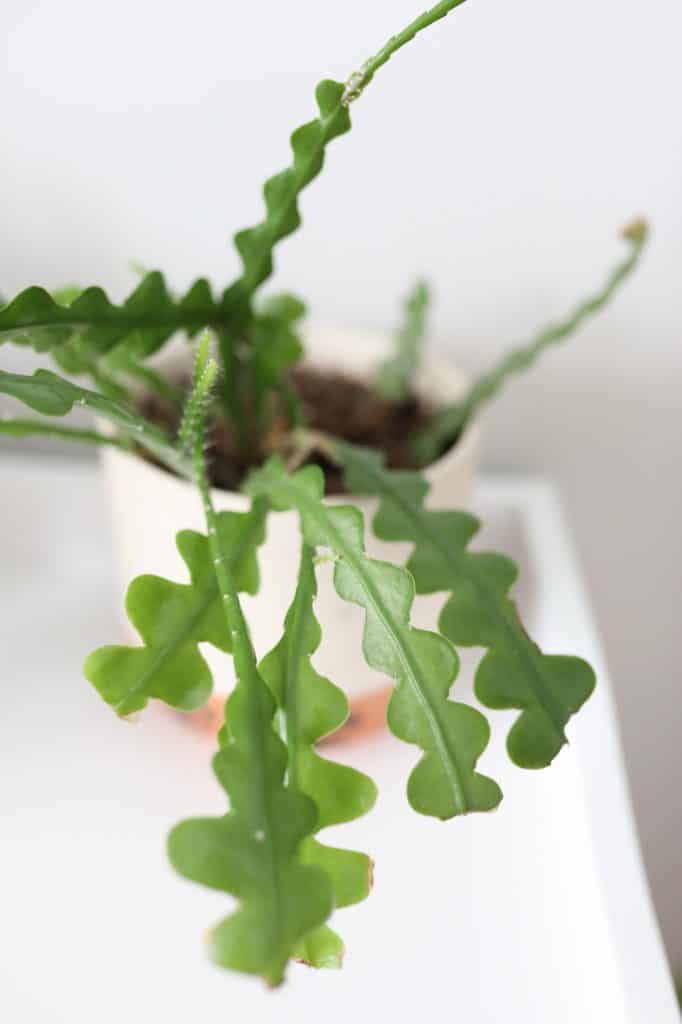
Fertilizer
Fertilizers are the material you add to your plant’s soil to make it nutrient dense and allow the plant to grow well. A liquid cactus or succulent fertilizer is one of the best options. Add it to the soil during early spring for the best results.
While creating your potting mix, make sure to add a good quantity of some organic substance like peat moss or orchid mark so that your plant can survive throughout the year without any external fertilizers.
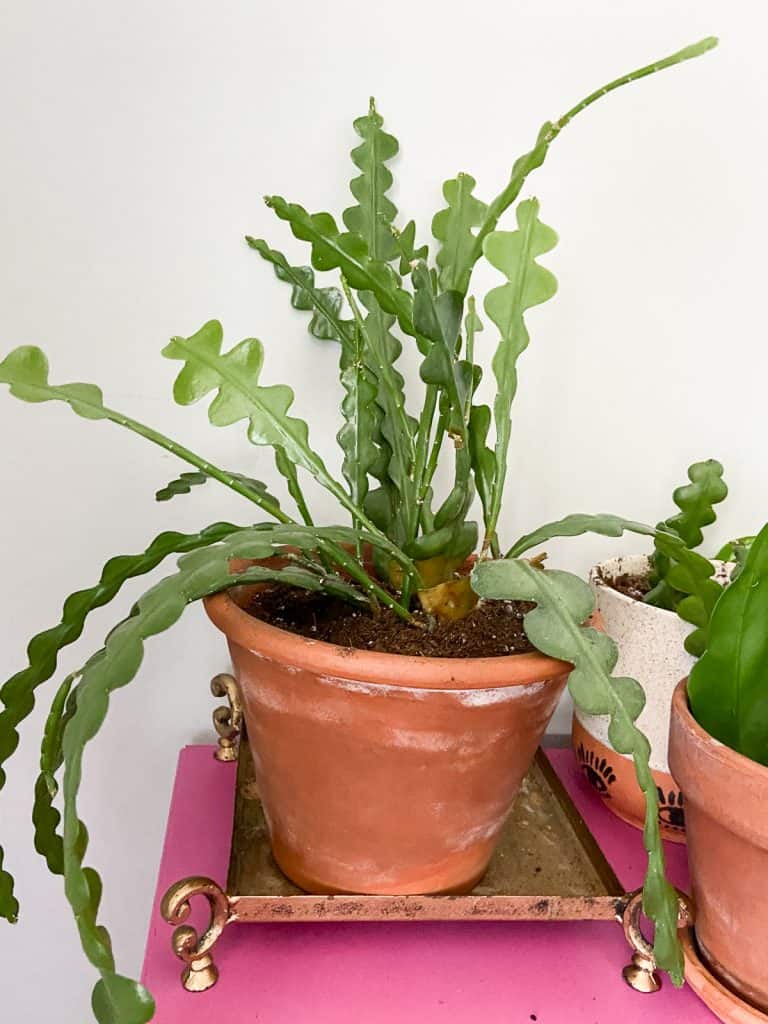
Temperature And Humidity
Fishbone cactuses are best kept in humid and warm conditions. Mexico’s tropical rainforests are their natural habitat, so they are accustomed to those conditions.
The ideal room temperature to place your plant in is around 60 to 78 degrees Fahrenheit. You can also use a humidifier to increase humidity, preferably above 60%, for the plant to do well.
Toxicity
Ric Rac plants are incredibly safe to keep inside your home and office and around children and pets. They are free from toxins and do not pose any problem if consumed.
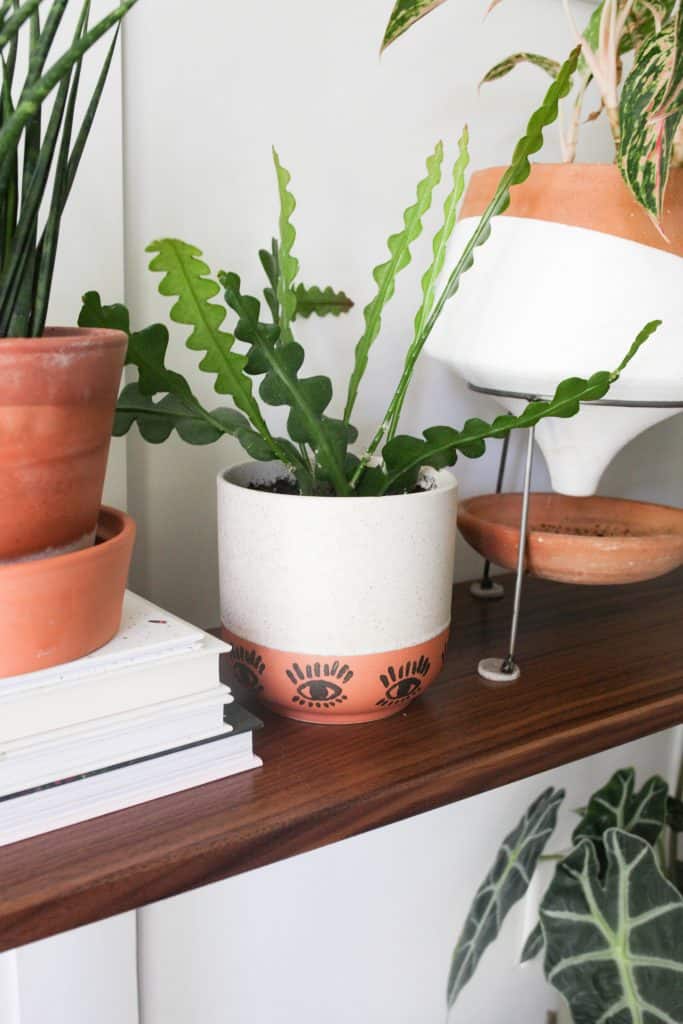
Pests And Diseases
Some of the common pests that a fishbone cactus is susceptible to include fungus gnats, mealybugs, and aphids. As they grow in humid conditions, the plants may also develop common diseases like fungal leaf spots and root rot.
Pruning And Repotting
You can skip proper pruning and trim the leaves of the plant instead to make it appear more pleasing aesthetically. The only time you would want to take cuttings from the plant is when you want to propagate it.
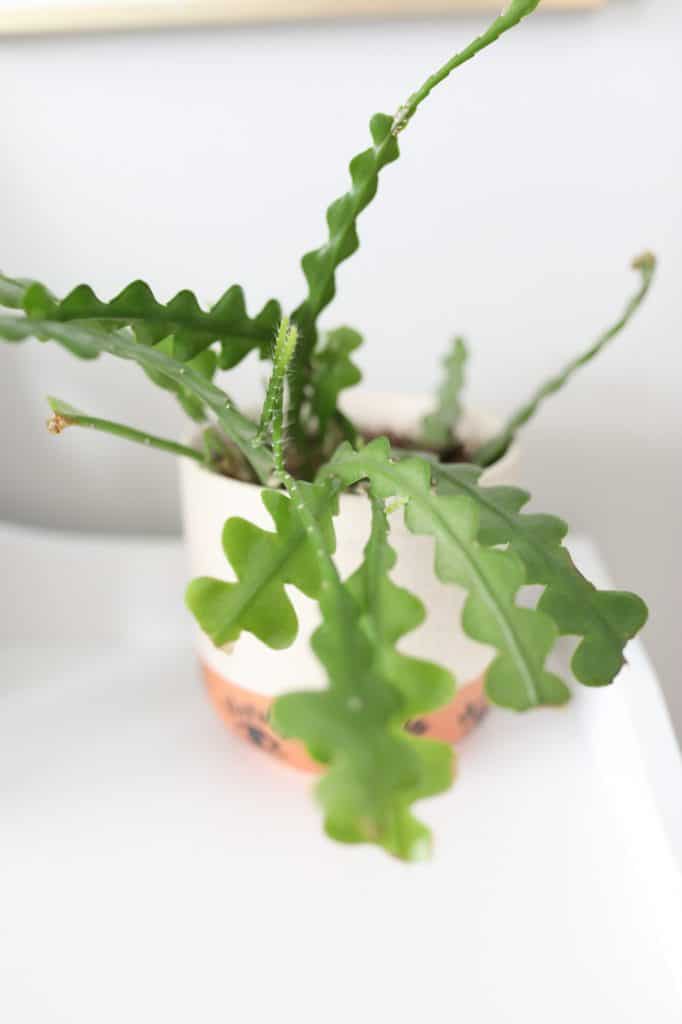
Propagating
Another reason why the fishbone cactus makes for an ideal house plant is that it is easy to propagate. It allows you to develop new plants without damaging the existing ones.
The best time to propagate a fishbone cactus is during summertime. During the wintertime, the leaves enter the dormant period, so it is not the right time to propagate them.
If you want to multiply your fishbone cactus through stem cutting, here are the steps to follow:
- Take around a 4-to-5-inches-long cutting from the original plant using a pair of sharp scissors.
- The cutting should be allowed to be callous over for about a day, so they should be placed in a cool and dry location.
- Fill another pot or vessel with a potting mixture.
- Moist the potting mix and then plant the calloused cuttings in it.
- Place the plant under indirect, bright sunlight.
- Water the cuttings, and keep the soil moist at all times.
- The cuttings will develop into a full-fledged plant. Now can transfer it to a new pot and maintain it the same way you care for your existing plant.
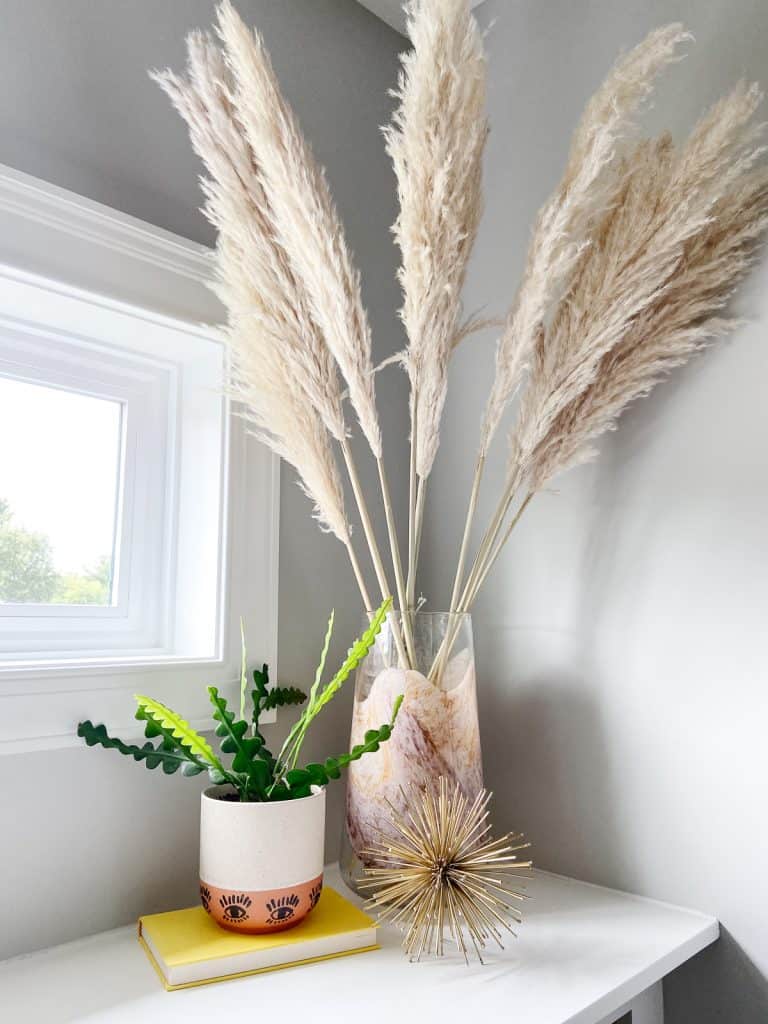
Frequently Asked Questions
A fishbone cactus blooms for a very short period and only starts bearing plants once it reaches the age of 3 years.
If you want the plant to bloom faster, you can try keeping them in cool conditions. Avoid fertilizing the plant once the flowers on the cactus bloom.
No, a fishbone cactus plant is completely safe for cats.
The fishbone cactus must be watered about every other week during summers. During winters, the plant may be watered once a month or slightly more.
Compared to other cactus, the fishbone cactus is a thirsty plant and should be watered once the top few inches of the plant start drying up.
Your fishbone cactus is stressed and not properly taken care of, which is probably why it is turning yellow. If the plant’s roots rot due to waterlogging, it may turn the leaves of the fishbone cactus yellow.
Another reason your cactus might turn yellow is exposure to direct, excessive sunlight. Too much sunlight can make the plant turn saggy and yellow.
It is very common for Ric Rac to start growing roots, so you mustn’t worry about it. This usually happens when it’s on the dry side. Make sure to give it enough water and check that the potting mixture is adequate and nutrient dense.
Fishbone Cactus plants are a super fun plant to get that will make a big impact in your home. We hope you learned everything you need to know about the ric rac!
Find other cactus plants here!

